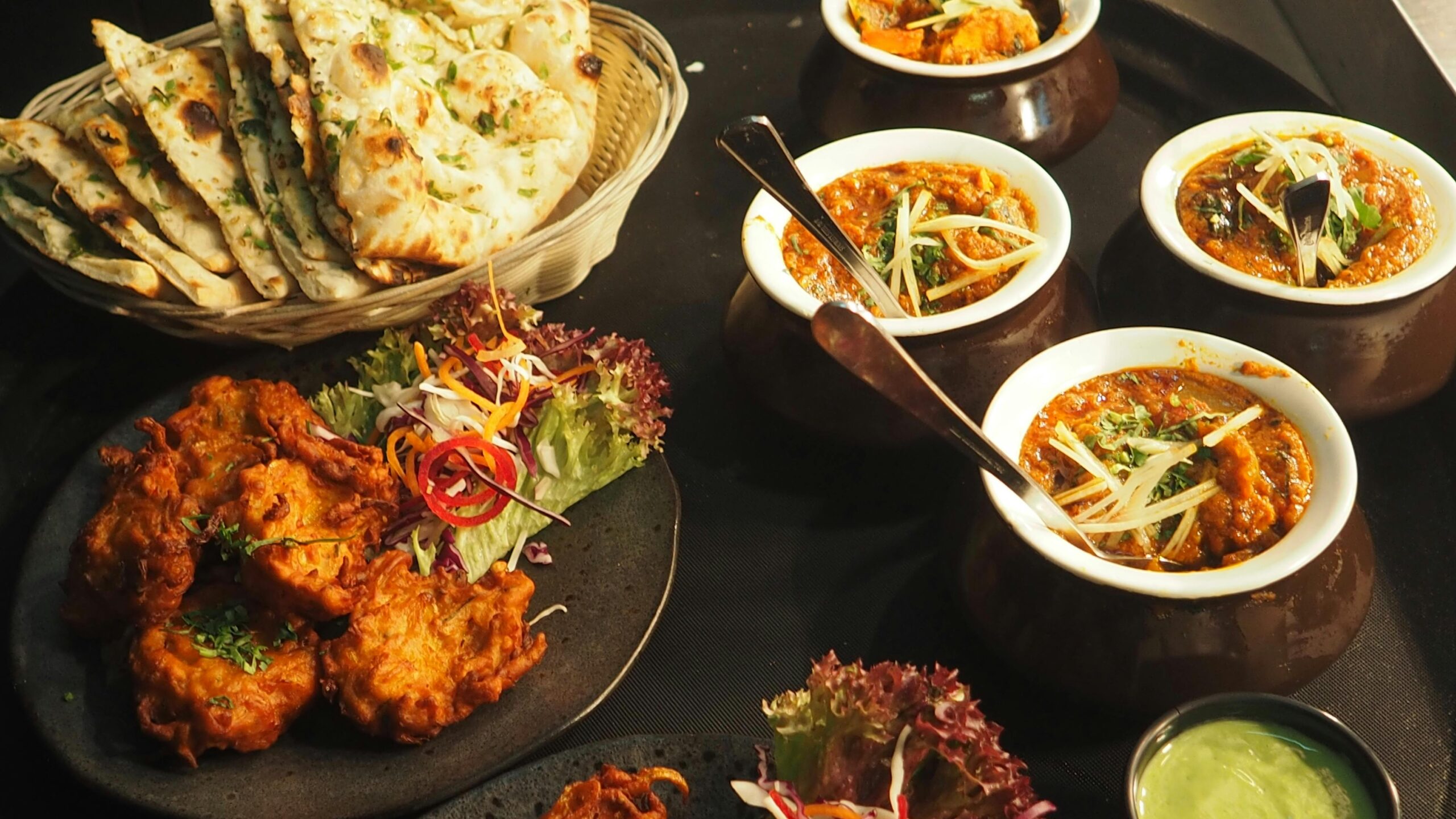India, with its rich cultural heritage, offers an equally diverse and tantalizing cuisine. Indian food is an explosion of flavors, spices, and textures that cater to every palate. From street food to royal delicacies, each dish tells a story of tradition, history, and regional influences. Whether you are visiting India or trying Indian food for the first time, this guide will help you understand what to expect.
The Diversity of Indian Cuisine
India’s cuisine is as vast as its geography. Each region has its unique cooking style, ingredients, and flavors.
1. North Indian Cuisine
- Characterized by rich, creamy gravies, tandoori dishes, and an extensive use of dairy (ghee, butter, paneer, yogurt).
- Popular dishes include Butter Chicken, Paneer Tikka, Rogan Josh, Chole Bhature, and Dal Makhani.
- Indian breads like Naan, Roti, and Paratha are staples.
2. South Indian Cuisine
- Known for its use of rice, coconut, tamarind, and an array of spices.
- Signature dishes include Dosa, Idli, Vada, Sambar, Rasam, and Biryani (Hyderabadi style).
- Filter coffee is a must-try beverage.
3. East Indian Cuisine
- Offers mild yet flavorful dishes, often featuring mustard, poppy seeds, and fish.
- Iconic dishes include Macher Jhol (Bengali Fish Curry), Rosogolla, Sandesh, and Litti Chokha.
- Rice and lentils are dietary staples.
4. West Indian Cuisine
- Features spicy and tangy flavors with influences from coastal and desert regions.
- Popular dishes include Vada Pav, Pav Bhaji, Dhokla, Goan Fish Curry, and Prawn Balchao.
- Coastal regions heavily use coconut and seafood.
The Role of Spices in Indian Cooking
Indian food is synonymous with spices. They don’t just add heat but enhance flavors and provide health benefits. Some essential Indian spices include:
- Turmeric – Anti-inflammatory, adds color.
- Cumin – Earthy, enhances digestion.
- Coriander – Citrusy, used in curries.
- Cardamom – Sweet and aromatic.
- Mustard Seeds – Adds a nutty, pungent taste.
- Garam Masala – A blend of spices for depth.
Vegetarian and Non-Vegetarian Delights
India has one of the largest vegetarian populations in the world. Many dishes are completely plant-based, using lentils, chickpeas, paneer, and vegetables creatively.
For non-vegetarians, India offers an array of meat and seafood dishes, often marinated and cooked in rich gravies or grilled in a tandoor.
Street Food Culture
Street food is an integral part of Indian cuisine. Some must-try street foods include:
- Pani Puri/Golgappa – Hollow crispy balls filled with tangy tamarind water.
- Samosa – Deep-fried pastry stuffed with spiced potatoes.
- Bhel Puri – Puffed rice with chutneys and sev.
- Kathi Roll – A wrap filled with spiced meat or vegetables.
- Dabeli – A spicy potato-filled burger from Gujarat.
What to Expect When Dining in India
- Diverse Menus – Indian restaurants offer vegetarian, vegan, and meat options.
- Use of Hands – Many dishes are traditionally eaten by hand, especially in South India.
- Spice Levels – Indian food can be spicy; always check before ordering.
- Thali Experience – A full meal with a variety of small dishes served on one plate.
- Chutneys and Pickles – These accompany most meals, adding zest and spice.
- Sweet Endings – Desserts like Gulab Jamun, Jalebi, and Kheer complete the meal.
Final Thoughts
Indian food is a feast for the senses, combining flavors, textures, and aromas that leave a lasting impression. Whether you love spice or prefer milder flavors, India has something to offer everyone. Next time you explore Indian cuisine, embrace the variety and savor every bite!

